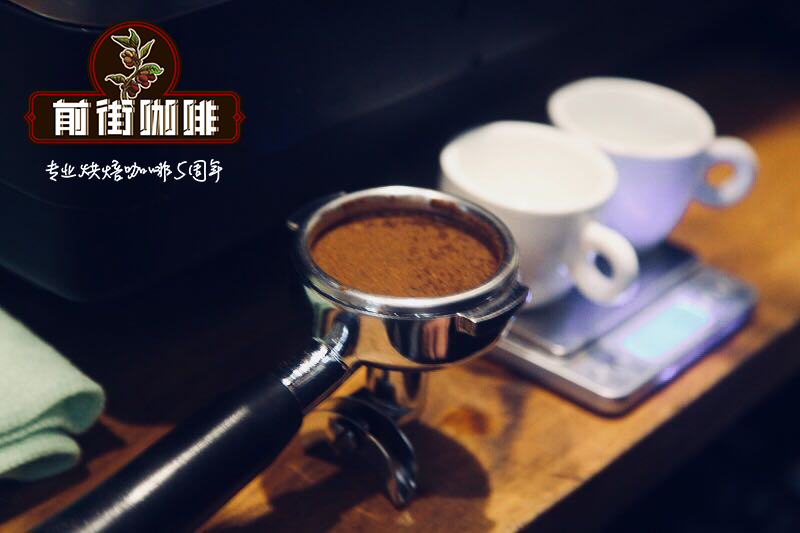Is chelelektu coffee good in Xuelitu producing area? Yega Xuefei drink correctly.

Professional coffee knowledge exchange more coffee bean information please follow the coffee workshop (Wechat official account cafe_style)
The Chelelektu washing station, established in 2010, processes 950000 kilograms of ripe coffee cherries a year from 363 producers of raw materials. Since 2014, the washing station has improved its infrastructure and used fresh, clean water with a ph of 8.5 to treat coffee. The coffee is dried in the sun, with 134 raised beds across almost 3 hectares of land. There are 12 fermentors for soaking washed coffee and then it takes about 18 days to dry.
Chelektu farmers are small-scale growers who bring ripe cherries to the cleaning station in Celektu for processing. Farmers around Chelelektu plant trees at an altitude of 1300-2200 meters, making it one of the most diverse bathing stations in Yirgacheffe. Small springs and streams form fermented water, allowing cherries to fully ferment within 37 hours. Chelektu's water reacts with local heirloom varieties, giving the fermented coffee a bright red color, which is characteristic of this micro-area.
The Celectu washing station gets its name from its location in the town of Celectu, also known as kebel, which is located in the Kochere area of the wider Yirgacheffe Coffee area.
Kurume is one of the land species from Yirgacheffe in Ethiopia. Surveys conducted between 1989 and 1994 helped to determine the local land race. Before the 1970s, Ethiopia had little deliberate breeding or variety selection at the national level; individual farmers chose seeds locally to propagate their crops. However, a devastating epidemic of coffee berry disease in the 1960s led researchers to establish the Jimma Agricultural Research Center (JARC) and began cataloguing coffee trees, which proved that they were resistant to both coffee berry disease and drought and had high yields.
These selections are made as a national crop improvement project, but in the fields, newly selected and resistant varieties do not perform well in climatic conditions different from Jimma, and Jimma is the breeding ground for these crops. JARC researchers focused on the classification and selection of local land varieties that naturally adapt to the environment in which they have grown and represent the coffee flavor of many coffee-growing areas in Ethiopia.
Kurume is a regional race found in the Yirgacheffe area. Like terrestrial species in many areas, the names of coffee varieties are borrowed from local trees. The kurum tree bears small fruit and has a good year, similar to the small cherries of kurum coffee, with a bumper harvest. Kurume is a variety commonly grown by farmers in Guji and Gdeo (including Yirgacheffe). Sometimes, Kurum's name is applied to Jake's chosen species because the trees look similar.
Dega is another local landowner named after local trees. The wood of Dega trees gives off a sweet aroma when used as firewood, similar to the smell of roasted coffee. The Amharic word "dega" means "cool upland area" and also applies to the agro-ecological conditions for the growth of dega coffee.
Wolisho is another local race named after the native trees of Gedeo and the surrounding area. The tree bears big fruit, but its annual yield is unstable. Wolisho coffee has big cherries and long leaves.
Chelelektu coffee is ready for export at Tracon Trading's 30, 000 square metre coffee cleaning and storage plant in Addis Ababa. The factory is equipped with modern Ping Herris coffee processor and Buller Z+ color separator. This machine can process six tons per hour. All processing work is mechanical and electronic, including the final manual picking on the conveyor belt. The factory's six silos can hold about 15000 metric tons of coffee at a time. The warehouse is clean, with adequate lighting and ventilation, which is ideal for maintaining the quality of coffee.
END
Important Notice :
前街咖啡 FrontStreet Coffee has moved to new addredd:
FrontStreet Coffee Address: 315,Donghua East Road,GuangZhou
Tel:020 38364473
- Prev

What are the varieties of boutique coffee beans? what are the varieties of coffee that are not bitter?
More information about coffee beans Please follow Coffee Workshop (Wechat official account cafe_style) Caturra is a natural hybrid of Bourbon, but it is further developed and widely cultivated by the Alcides Carvalho Coffee Center (Centro de Cafe) of the Agricultural Research Institute (IAC) in the State of Sao Paulo, Brazil. This variety has been produced in the coffee industry around the world.
- Next

Carnett Manor Coffee is Carnett Manor Coffee good? Carnett Manor Coffee producing area
Professional coffee knowledge exchange more coffee bean information Please follow Coffee Workshop (Wechat official account cafe_style) La Candelilla, named after its rich firefly population, is made up of nine small farms owned and run by Sanchez's nine brothers and sisters and their families. They work together in all aspects of production and process their harvests in factories to make
Related
- Beginners will see the "Coffee pull flower" guide!
- What is the difference between ice blog purified milk and ordinary milk coffee?
- Why is the Philippines the largest producer of crops in Liberia?
- For coffee extraction, should the fine powder be retained?
- How does extracted espresso fill pressed powder? How much strength does it take to press the powder?
- How to make jasmine cold extract coffee? Is the jasmine + latte good?
- Will this little toy really make the coffee taste better? How does Lily Drip affect coffee extraction?
- Will the action of slapping the filter cup also affect coffee extraction?
- What's the difference between powder-to-water ratio and powder-to-liquid ratio?
- What is the Ethiopian local species? What does it have to do with Heirloom native species?

